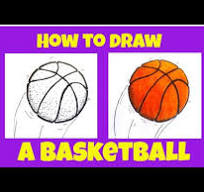Starting with basic sketches or illustrations is an excellent way for beginners to venture into the world of drawing. These simple drawings are not time-consuming or complicated, making them ideal for novices eager to tap into their artistic side. By utilizing straightforward shapes and easy techniques, anyone can begin their journey in drawing without feeling intimidated. The goal is to make the drawing process enjoyable and accessible for all.
The Importance of Easy Drawings
Easy drawings are fundamental for developing more sophisticated artistic skills. They are crucial in helping beginners build self-confidence, enhance hand-eye coordination, and grasp basic drawing principles such as line, shape, and proportion. Moreover, engaging in these simple sketches offers a relaxing and enjoyable activity for people of all ages.
Getting Started with Easy Drawings
Essential Tools and Materials for Beginners
To embark on your journey with easy drawings, you’ll need some basic tools and materials:
- Pencils: A set ranging from HB to 4B will allow you to experiment with various shading techniques and achieve different textures.
- Paper: Opt for high-quality, smooth drawing paper or a sketchbook. Acid-free paper is preferable to ensure your artwork lasts.
- Erasers: A kneaded eraser is perfect for targeted erasing and lightening areas without leaving residue. A standard eraser will handle larger corrections.
- Sharpener: A quality sharpener keeps your pencils sharp for consistent lines and detailed work.
- Ruler: Useful for drawing straight lines and measuring, a clear or metal ruler with markings is ideal.
Additional Beginner Tips
- Start Simple: Begin with basic shapes and simple objects to build foundational skills.
- Practice Regularly: Daily practice, even if brief, is vital for improving your drawing skills.
- Observe and Learn: Pay attention to details in your environment to enhance your observational skills.
- Experiment: Feel free to try various techniques and materials to discover your personal style.
Mastering Fundamental Shapes in Easy Drawings
Starting with basic geometric shapes like circles, squares, and triangles is crucial as they form the backbone of more complex and detailed drawings.
Perfecting Basic Lines and Curves
- Engage in drawing exercises that involve straight lines, curves, and zigzags to improve control and precision, which are essential for more intricate artworks.
- These practices build muscle memory and enhance hand-eye coordination, crucial for mastering the art of drawing.

The Benefits of Learning to Draw
Drawing not only enhances creativity and problem-solving skills but also offers a therapeutic way to express oneself and reduce stress.
Overcoming Common Drawing Challenges
Conquering the Fear of Imperfection
- Remember, every artist starts somewhere small. Embrace imperfections as part of the learning curve.
Sustaining Motivation
- Set achievable goals and celebrate small victories to keep your motivation high.
Finding Time for Drawing
- Integrate drawing into your daily routine, keeping a sketchbook handy to make the most of any opportunity to sketch.
Guided Easy Drawing Lessons
Simple Animal Sketches
- Cat: Start with a circle for the head, add an oval for the body, then sketch ears, tail, and facial details.
- Dog: Begin with an oval for the head, attach a larger oval for the body, and add limbs, ears, tail, and facial features.
Simple Object Sketches
- House: Begin with a rectangle, add a triangular roof, then sketch windows, a door, and additional details.
- Tree: Draw two parallel lines for the trunk and a large oval for foliage, adding branches and textures.
Enhancing Your Drawing Skills
Adding Shading and Texture
- Techniques like hatching, cross-hatching, and stippling add depth and realism to your drawings.
Using References
- Employ real-life references to ensure accuracy in details and proportions.
Committing to Regular Practice
- Consistent practice is key to advancement. Dedicate time each day to draw and explore different subjects and styles.
Exploring Original Concepts in Easy Drawings
- Let your imagination run wild with doodles and patterns, drawing inspiration from nature and cartoons to enrich your sketches.
Expert Insights for Simple Sketches
Exploring Various Styles
- Experiment with realism, abstraction, and cartooning to find your preferred drawing style.
Infusing Vibrancy with Color
- Start with colored pencils or markers, exploring blending and shading to bring your drawings to life.
Embracing Digital Tools
- Explore digital drawing tools, which offer endless possibilities for enhancing your artistic output.
Final Thoughts on Easy Drawings
Beginning with easy drawings is a great way for novices to step into the art of drawing. Essential tools like pencils, paper, and erasers, combined with simple shapes and subjects, help build confidence and skills. Through regular practice and embracing every part of the learning process, drawing becomes not only a creative outlet but also a fulfilling journey.

